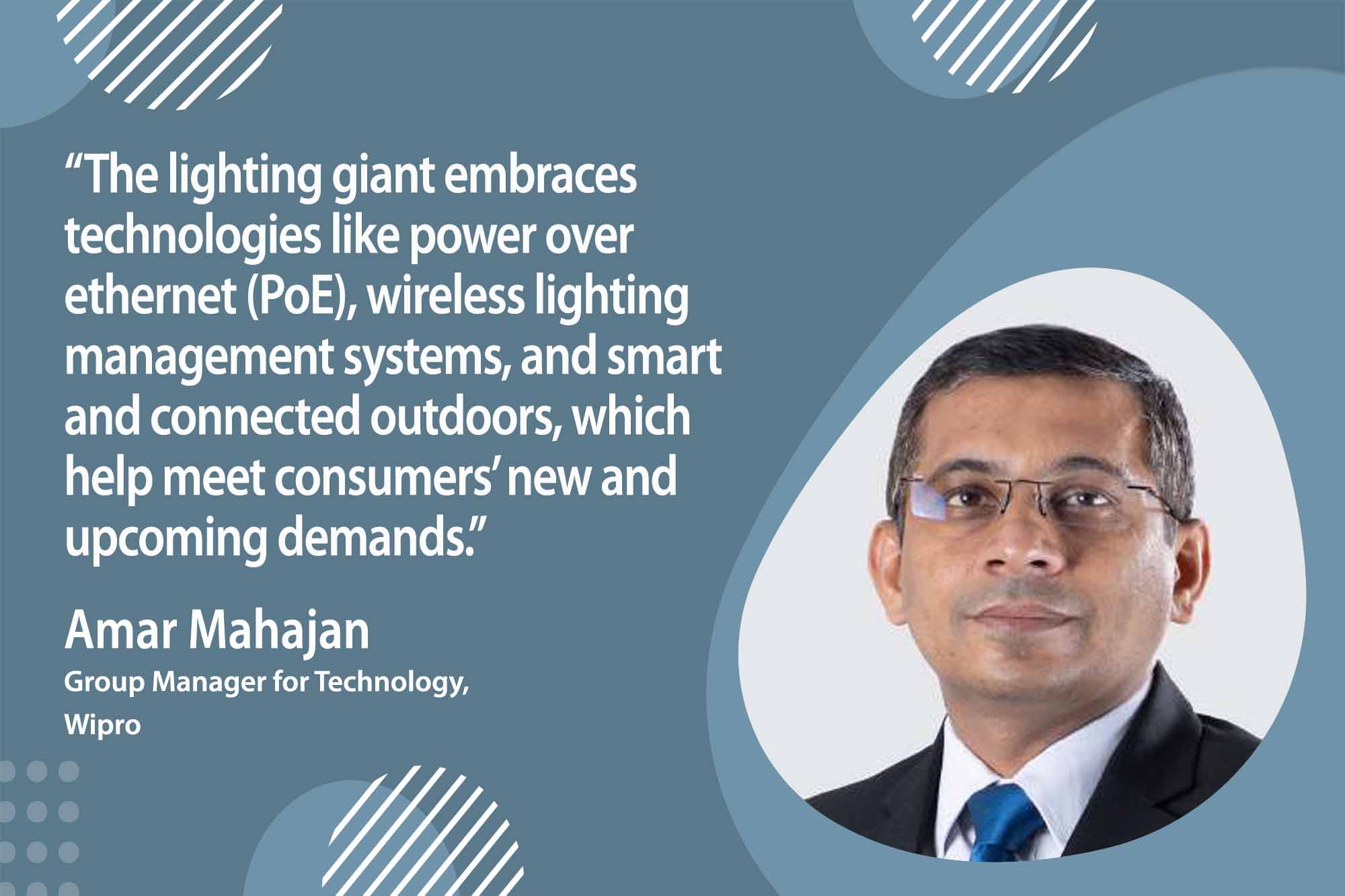Wipro smart lighting catalysing digital shift in the utilities sector
By EPR Magazine Editorial February 20, 2024 6:25 pm IST
By EPR Magazine Editorial February 20, 2024 6:25 pm IST

The lighting giant embraces technologies like power over ethernet (PoE), wireless lighting management systems, and smart and connected outdoors, which help meet consumers’ new and upcoming demands.
The utility sector in India is undergoing a profound digital transformation driven by advancements in technology and a growing emphasis on energy efficiency. The lighting industry is at the forefront of this evolution, where innovations like smart and connected solutions are reshaping how power is managed and utilised. Amar Mahajan shares insights into the industry with the EPR Magazine.
What are the key factors driving the digital transformation in the utilities sector in India?
A few years back, energy saving was the buzzword in the lighting industry. With the introduction of LED as a new light source, we achieved 40-65 percent energy saving over conventional lighting fixtures used in the utility sector. With LEDs getting stable and mature technology, Smart & Connected Solution emerges as the next area that can boast further energy savings by automation, integration with end devices, and a granular view of the overall system from local or remote locations.
More mature and robust smart solutions are available in the market with a proven track record of being utilised in critical applications like offices, retail areas, control rooms,and industries outdoors etc. The ease of implementing any smart solution is the key factor apart from its usability or user-friendliness. We have witnessed that after digital transformation, customers are more aware of what exactly is happening with the smart lights and managing them better for more uptime, better energy savings, ease of maintenance and better quality of light throughout their service life, etc.
How has the lighting industry evolved with digital transformation and government initiatives, benefiting companies like Wipro?
The lighting industry has adopted digital transformation for selected areas in the power sector. Critical areas like control rooms, admin buildings, and offices are the frontrunners in adaptation. We at Wipro Lighting provide solutions users like and use regularly. It is imperative to have better penetration of digital solutions in other areas of power plants, outdoors, and substations and connect it for remote monitoring for better control and utilisation of resources.
The government has supported the lighting industry by providing good opportunities to develop local infrastructure through schemes like PLI (Production Linked Incentive), local manufacturing, and skill development programmes, which have benefitted the industry enormously. The government was instrumental in the adaptation of LED technology in their projects and supported mass LEDfication of outdoor street lights through EESL procurement, which has strengthened the industry for better supply chain management, mass production and improving the quality of the products that get into the market.
Moreover, critical initiatives from the government through BIS for making standards for new technology like LEDs helped in better quality and safe solutions coming to market instead of only low-cost products getting popular.Which innovations or strategies has your company applied to compete in the evolving market?
We have worked on multiple fronts at Wipro Lighting to compete in the market. Our main focus is on the quality of solutions we develop at optimum commercials, giving property owners the best techno-commercial advantage. We work with best-in-class LED and power electronics component manufacturers. We invest in an in-house design and development team for optics and tools development for overall product development. We were able to embrace technologies like power over ethernet (PoE), wireless lighting management systems, and smart & connected outdoors, which helped us meet the consumers’ new and upcoming demands.

How has the smart lighting system contributed to curbing AT&C losses?
The best advantage of smart lighting is the connectivity at the device level. Once the system is connected, customers can get details from each device about its working, health, faults alerts, etc.
In today’s world, when data is available from devices, customers can look into it for more detailed analytics on what is happening and how we can improvise the usage. We can have details of the health of the devices, and any fault can be rectified immediately. We can measure critical parameters like actual energy consumption and show exact energy savings due to a smart system. Facility managers can get alerts from the system on power quality and improve the internal system to handle critical conditions like under-voltage, over-voltage, phase-to-phase operations, etc. Reports and analytics from the smart lighting system help the maintenance team with better inventory management, reducing system downtime and measuring the effectiveness of the lighting.
The smart lighting system has significantly contributed to curbing AT&C losses through controls implemented to deliver the best possible outcome of the system.
Spokesperson: Amar Mahajan, Group Manager for Technology- Wipro
We use cookies to personalize your experience. By continuing to visit this website you agree to our Terms & Conditions, Privacy Policy and Cookie Policy.